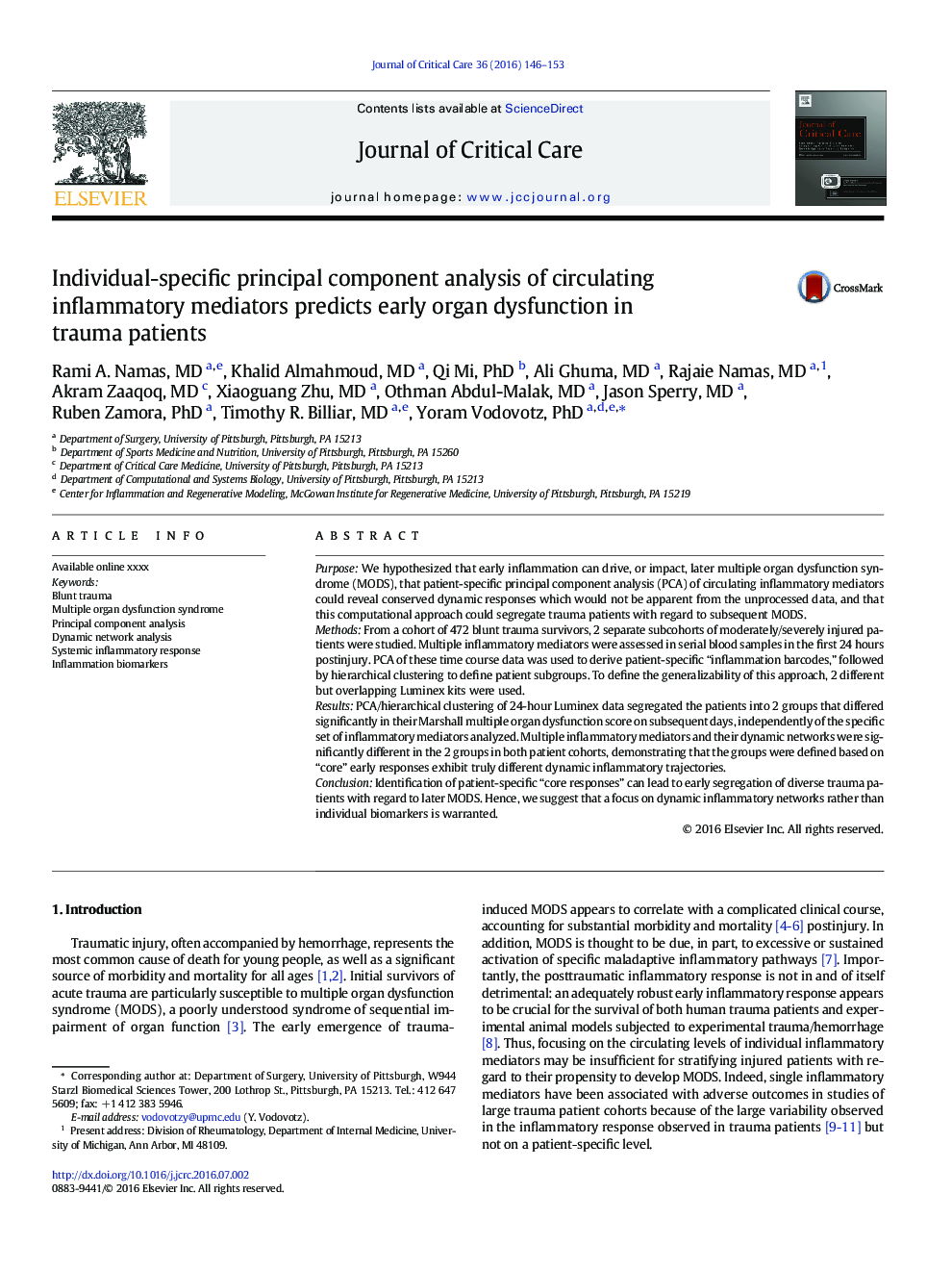| Article ID | Journal | Published Year | Pages | File Type |
|---|---|---|---|---|
| 2764379 | Journal of Critical Care | 2016 | 8 Pages |
PurposeWe hypothesized that early inflammation can drive, or impact, later multiple organ dysfunction syndrome (MODS), that patient-specific principal component analysis (PCA) of circulating inflammatory mediators could reveal conserved dynamic responses which would not be apparent from the unprocessed data, and that this computational approach could segregate trauma patients with regard to subsequent MODS.MethodsFrom a cohort of 472 blunt trauma survivors, 2 separate subcohorts of moderately/severely injured patients were studied. Multiple inflammatory mediators were assessed in serial blood samples in the first 24 hours postinjury. PCA of these time course data was used to derive patient-specific “inflammation barcodes,” followed by hierarchical clustering to define patient subgroups. To define the generalizability of this approach, 2 different but overlapping Luminex kits were used.ResultsPCA/hierarchical clustering of 24-hour Luminex data segregated the patients into 2 groups that differed significantly in their Marshall multiple organ dysfunction score on subsequent days, independently of the specific set of inflammatory mediators analyzed. Multiple inflammatory mediators and their dynamic networks were significantly different in the 2 groups in both patient cohorts, demonstrating that the groups were defined based on “core” early responses exhibit truly different dynamic inflammatory trajectories.ConclusionIdentification of patient-specific “core responses” can lead to early segregation of diverse trauma patients with regard to later MODS. Hence, we suggest that a focus on dynamic inflammatory networks rather than individual biomarkers is warranted.
